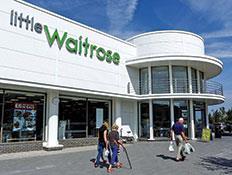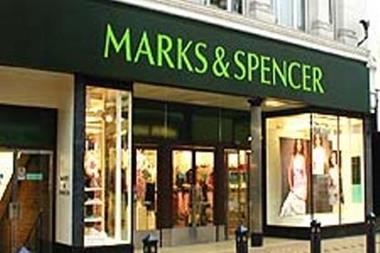With Britain’s largest supermarkets in chaos and Tesco seemingly issuing a profit warning every week, the early signs of a revival at Marks & Spencer have slipped under the radar.

Although it may seem bizarre to claim there is a recovery, given that the 130-year-old high street chain only last month reported a 2.3% fall in sales in its key general merchandise division, a combination of data and murmurings suggest M&S will be back in growth soon.
Those in the know at Waterside House, M&S’s plush Paddington Basin HQ, report that Marc Bolland has never during his four-year tenure appeared more relaxed and finally seems comfortable in a role that is the
business equivalent of the England football team manager.
At a Christmas dinner held by M&S for the media Bolland, who can appear edgy at social occasions, spoke freely about his views on the rapidly changing grocery industry. Meanwhile, Steve Rowe, the company’s highly-rated head of food, continues to have a spring in his step despite the supermarket price war, and John Dixon, the boss of general merchandise, is talking like a man who feels he is getting on top of the company’s clothing business.
When M&S launched its 2015 spring and summer clothing collection last month, Dixon reeled off statistics that he said reflected the progress the retailer is making. This included a 20% fall in the number of complaints about the quality of its clothing compared with last year.
More importantly, although M&S’s half-year results showed a fall in clothing sales, they also revealed it is growing profit margin. This is a key sign that Dixon is shaking up the company’s supply chain and delivering on his promise to improve the quality and style of M&S fashion.
For the other executive on the M&S board, Laura Wade-Gery, life has not been as smooth. The executive director for multichannel has been criticised for the complexity of M&S’ new website and faced complaints from customers about delays in order deliveries.
Nonetheless, one of the reasons for believing that M&S can start to grow profits and clothing sales again after almost four years of decline is its so-called ‘bench strength’. While Tesco’s executive team is riddled with inexperience and led by a man who has only worked in retail for four months, M&S’s board is packed with well-regarded retailers. This experience will be added to next year when Helen Weir, formerly of Kingfisher and Lloyds Banking Group, joins as finance director. The fact that Weir has been poached from the same role at John Lewis is further evidence M&S could have its mojo back.
Having said all this, M&S could endure a torrid Christmas and end up issuing a profit warning in January due to disappointing clothing or food sales. The warm September and October weather has caused so many problems for retailers trying to sell winter clothing that there are whispers not everyone on the high street will survive the festive season.
However, even if M&S does suffer an underwhelming Christmas, there is enough evidence to suggest it is heading in the right direction long-term. This includes the growth in food sales, clothing margins, and the general impression you get when visiting M&S’s top stores, such as the Pantheon on Oxford Street. These spaces have been de-cluttered and revamped so the clothing brands such as Autograph finally have a clear identity.
But as with the supermarkets, M&S has a property problem. Although the company is opening 200 Simply Food stores over the next three years, it has too much space for clothing. This means it has to build a clothing range large enough to fill shops far larger than those of its rivals. As a result, Bolland has said M&S will not open any extra non-food shop space in the UK. In fact, M&S closed three of its 232 high street shops between March and September. This is another pillar in the long-term plan to rebuild Britain’s most famous retailer.
Graham Ruddick is retail correspondent for the Daily Telegraph and Sunday Telegraph





























No comments yet